2019 Hyundai Veloster N Review

Good, Cheap, Fast – pick two.
It’s an age-old saying in automotive circles and it’s mostly true, but after sampling the new 2019 Hyundai Veloster N on both the road and track, it’s clear that Hyundai tried to nail down all three of these traits with its first-ever hot hatchback.
This catch-all approach was a glaring gap for Hyundai to fill. There aren’t many compact performance offerings on sale in North America, and those that we do have are frequently dubbed to be either too slow or too expensive. The enthusiasts have been asking for a car like this, and program director Albert Biermann and his team were listening.
Powering this wide-set, scrappy Korean three-door is a 2.0-liter turbocharged engine making 250 hp and 260 lb-ft of torque, but an optional Performance Pack (standard on Canadian models) pumps things up to 275 hp. With a clever Launch Control system, the 3,148 lb Veloster N will hustle from 0-60 mph in under 5.5s and top out at over 155 mph. It’s certainly fast, and thanks to a standard active exhaust, it sounds as maniacal as it looks, letting out a frenzy of cracks and pops when you let off the gas in the track-oriented N mode.
ALSO SEE: Top 5 Best AWD Hatchbacks: 2019
FAST FACTS
| Engine: | 2.0L turbo 4-cylinder |
| Output: | 250 hp, 260 lb-ft w/o Performance Pack, 275 hp, 260 lb-ft w/ Performance Pack |
| Transmission: | 6-speed manual with auto rev-match |
| Fuel Economy (MPG): | TBA |
| US Price: | $28,000 base |
| CAN Price: | $34,999 base |
| : | (Prices not including destination) |
The engine is paired with a six-speed manual, the only available transmission, which also features active rev matching. Biermann told us they included active rev match to make the car approachable for younger drivers just getting into track days, but if you prefer to heel-and-toe rev match, you can easily turn the system off with a dedicated rev match button on the steering wheel.
ALSO SEE: The Last 8 Cars that Only Come with Manual Transmissions
The highly boosted engine is nothing like the 1.6-liter in the Veloster Turbo, so no surprise — the chassis and suspension are quite a departure as well. Veloster bodies destined to be turned into Ns get additional weld points, more structural reinforcements and reinforced shock absorber mounts. The front axle gets reshaped steering knuckles and other suspension adjustments, while electronically adjustable dampers provide a ride ranging from Golf-like cushiness in Normal to back-shattering stiffness in N mode. Performance Pack models get an electronic limited slip differential, while standard versions use brake-based torque vectoring to make you appear more talented when you overshoot a corner or miss an apex. The steering ratio has also been sped up over the regular Veloster and now has electronic torque-steer fighting function too.
SEE ALSO: Honda Civic Type R Review
Corner Rascal
Through the corners, the Veloster N is certainly confidence inspiring. It feels as though it’s tuned for a bit of understeer up first, allowing you to easily feel the tires through the wheel – a feeling that only becomes stronger as you push it harder and harder. As far as modern-day boosted steering racks go, this one is quite talkative. The electronic diff also allows you to get on the gas extremely early, helping to build confidence quickly.
Hyundai refers to the car as a ‘Corner Rascal’ and it’s easy to see why – all you want to do in this thing is attack the corners lap after lap. With good steering feedback and a chassis that chatters away underneath of you, we’d say the Veloster N is approachable on track and perhaps even a bit too easy to flog hard. That’s what Biermann and his team wanted, though – an accessible, fling-able car that enthusiasts won’t be afraid to push hard with.
As for the engine, it pulls hard out of corners and sounds great doing it. All 260 lb-ft of torque is on tap between 1,450 RPM and 4,700 RPM, delivering the elastic torque that we’ve come to expect from today’s modern 2.0-liter turbos. While the exhaust noise is head-turning, the engine noise is a bit quiet (Hyundai pumps some induction noise in through the cabin), but this is probably best for street driving, anyway.
With absurdly quick rebound and a punchy, jarring ride, we’d only suggest using the N mode on the electronic dampers at the track. Hyundai says its N customers love this absurdly stiff suspension, though, and the Sport setting offers a balance between stiffness and comfort, so it’s easy to see why they opted for such a hard setting in N.
Impressively, the Veloster N offers a BMW-style N Custom mode, which allows you to pick individual settings for the suspension, steering, rev matching, engine and more. This allows you to have N performance without the hard ride, or tune the car to fit a certain road or track. For example, I used the softer suspension setting while autocrossing the car, as it wouldn’t bounce as much and had a bit more grip at low speed. You can easily flip between full-on ‘N’ mode and ‘N Custom’ using the dedicated ‘N’ button on the steering wheel, too.
Cutting Costs
So with a powerful 2.0-liter engine, reinforced body, fancy electronic suspension and many adjustable settings, you may be wondering how Hyundai kept costs down. The brakes were one way. Instead of opting for some fancy Brembos, they just used a larger in-house brake rotor and caliper. This keeps the initial cost down and makes it easier for the track-day enthusiast to replace them with OEM parts. Brake ducts (yes, those are real vents up front) attempt to prevent the Kia Optima-sourced brakes from fading on the track. The brakes on our test cars felt a bit unhappy after a day of hard track abuse, but the cars were driven harder and more aggressively than most owners might on a track day. You may want to upgrade the rotors and pads on your Veloster N if you’re planning to go to the track a lot, but overall the braking performance was strong. We wouldn’t mind seeing an optional brake package from Hyundai in the future, either.
SEE ALSO: 2018 Volkswagen Golf R Review
Another way Hyundai cut costs was the interior. If you were hoping for a nicely appointed interior, you’ll be let down. There are hard black plastics everywhere you look inside and the steering wheel and bolstered seats, while nice, are certainly nothing special. We’re actually OK with this, though. The Veloster N is for people who are tired of complaints about hard plastics and noise and just want to shut up and drive. Save the nitpicking for those who like to spend more money to have less fun. It’s not completely spartan anyway – it has ‘N Blue’ seat belts, standard Apple CarPlay and Android Auto and racing-style shift lights – what else do you need? Canadian models also get a standard heated steering wheel and heated seats too.
The Veloster N can’t be bothered with active safety, either, contributing to more savings for Hyundai. Forward emergency braking? Lane-keep assist? Forget about it. This is a car for drivers — not for those who see the open road as an obstacle sitting between them and their destination. Timid, cautious commuters need not apply.
The only options will be a track day wheel and tire package for U.S. buyers. This upgrade kit will net you lightweight OZ wheels with N-branded center caps, extra sticky Pirelli Trofeo R tires and upgraded brake pads. Colors are limited too: U.S. buyers will be able to get the Veloster N in white, black, red and the desirable N Blue, while Canadian buyers will only get black, white and blue for now.
Looks are subjective, but we can all probably agree that the Veloster is a quirky-looking automobile. Personally, I think the styling of this second-generation Veloster is a huge improvement over the outgoing model and the N, with its lip kit and rally-style dual segment rear wing, looks mean and not too over the top (looking at you, Civic Type R). All that venting up front is functional and the front splitter and rear wing also help to keep things stable at speed, so the wild-looking aero kit isn’t just for show either.
Having two seats in the back instead of three is a bit inconvenient and the trunk opening is a bit narrow compared to the Golf GTI. You could still go about your life normally owning a Veloster N, although you would experience a few space-related inconveniences here and there.
SEE ALSO: 2019 Hyundai Veloster Review
The Verdict: 2019 Hyundai Veloster N Review
Compared to its rivals, we’d say the Veloster N is much sharper and more trackable than Golf GTI and less expensive and more attainable than a Honda Civic Type R or Golf R. And just as Ford’s getting out of this fun-loving segment with the cancellation of the Focus ST, RS, and Fiesta ST – Hyundai is getting in. We’re just fine letting Ford chase profits with performance crossovers – the Veloster N is way more fun than the Focus ST ever was and is faster and more usable than the beloved Fiesta ST.
The Veloster N is a legitimate track day package that can do the daily commute in comfort and can actually take track punishment without falling on its face. If you like performance and only have the space or cash for one car, go ahead and put the Veloster N on your short list. It’s not a new performance benchmark in the segment – but it’s the right car at just the right time. Devoid of expensive overarching safety tech, priced right and focused on what matters most to its buyers: driving.
LOVE IT
- Sophisticated electronic suspension
- Shouty 2.0-liter sounds great
- Aimed at true driving enthusiasts
LEAVE IT
- Budget-minded interior materials
- Cramped back seat
- Not many options for now

Sam McEachern holds a diploma in journalism from St. Clair College in Windsor, Ontario, and has been covering the automotive industry for over 5 years. He conducts reviews and writes AutoGuide's news content. He's a die-hard motorsports fan with a passion for performance cars of all sorts.
More by Sam McEachern



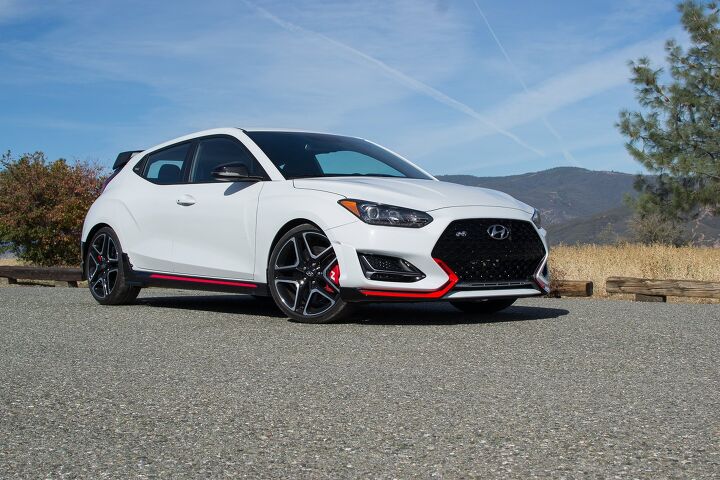
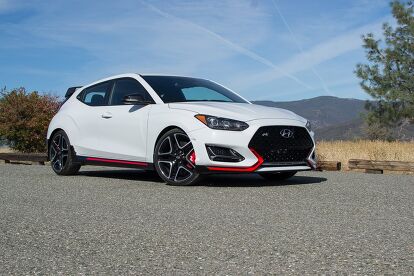








































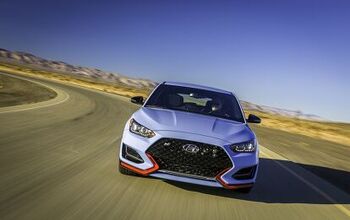
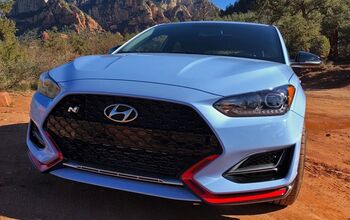
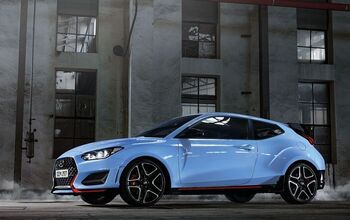
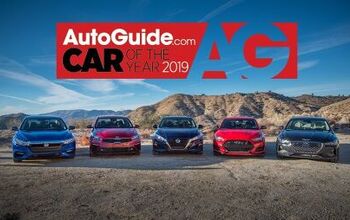
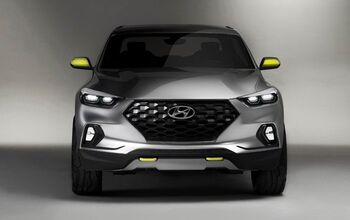

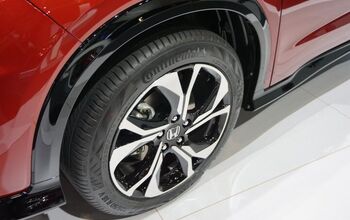

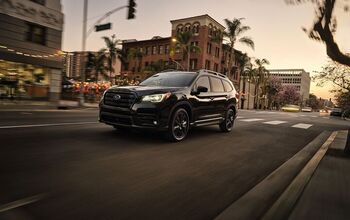
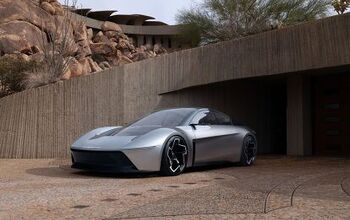
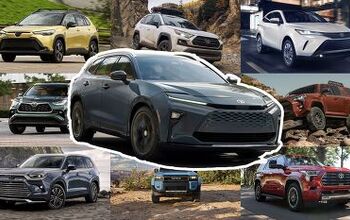
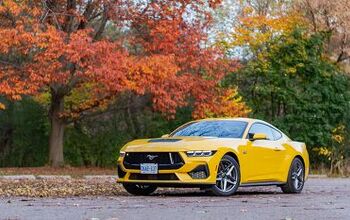


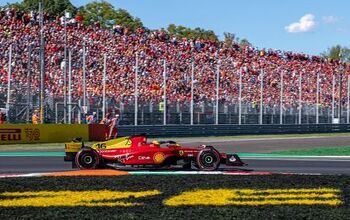
Comments
Join the conversation
amazing vehicle by hyundai, this needs to be hyped to the max!